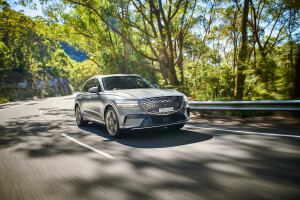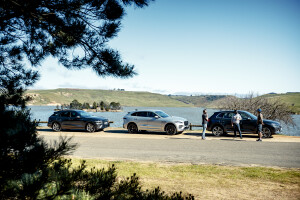Latest Review

2022 Genesis Electrified GV70 review
Third new Genesis EV in as many months is arguably the brand’s most crucial – a premium medium SUV with competitive range, cutting-edge charging and impressive capabilities … for a price
With automotive electrification finally part of the vernacular for both the Australian federal government and the general public, the fresh EV offerings from premium contender Genesis couldn’t be better-timed – the Electrified GV80 limousine, the sporty GV60, and now the Electrified GV70 medium SUV.
Yet of the three, it’s the electric GV70 that stands the best chance of making a long-term sales impact for the brand.
Genesis remains unsure as to just how effective this $128K electric SUV might be in elevating its presence in Australia – especially when carrying such a premium price – but based on our positive initial impressions of the Electrified GV70, and the 43 orders already placed during its first two weeks on sale, there’s a solid chance the GV70 sales split will nudge towards the electric version as supply improves throughout 2023.
There’s no doubt the Electrified GV70 finally offers the contemporary drivetrain tech the GV70 range has been crying out for since it launched here in mid-2021.
But is this Genesis good enough to compete head-on with its electric SUV rivals from Germany on both ability and price?
JUMP AHEAD
- How much is it, and what do you get?
- How do rivals compare on value?
- Interior comfort, space and storage
- What is it like to drive?
- How energy-efficient is it?
- How safe is it?
- Warranty and running costs
- VERDICT
- Video
- Specifications
How much is it, and what do you get?
At the Electrified GV70’s Australian preview drive back in May, rumoured pricing indicated a $105-115K sticker for this crucial electric SUV. But the full-production reality is $127,800 (before on-road costs) for this fully-loaded Genesis GV70, and just one optional extra – matte paint for $2000.
While an on-paper comparison with the twin-turbo GV70 3.5T petrol marks this as a huge price premium for electrification – a fully optioned 3.5T AWD sits at $91,700 before on-road costs (with matte paint another $2K) – the Electrified GV70 does include a five-year Chargefox subscription, or if you prefer, a complimentary AC wallbox charger for home or office use.
2022 Genesis GV70 electrified: the basics
As for what equipment the Electrified GV70 brings to the table, it arrives carrying every possible item available to combustion-engined GV70 customers, plus a few bespoke features.
These include unique 20-inch alloy wheels with 265/45R20 Michelin Pilot Sport EV tyres (regular GV70s wear either 19s or 21s), a filled-in front grille with concealed charging flap, unique front and rear bumpers (minus the gratuitous exhaust outlets of combustion-engined models), acoustic laminated rear door glass, a ‘boost’ button on the lower spoke of the sports steering wheel, a driver-only option for the climate control, active noise control and interior/exterior vehicle-to-load charging capability (including a three-prong, house-type outlet in the boot).
It’s also available in a unique colour (Atacama Copper), with either a gloss or matte finish – complemented by copper seat piping on cars with Glacier White upholstery.
What the Electrified GV70 foregoes is a pair of speakers for its Lexicon by Harman sound system (14 in total instead of 16) and the 3.5T’s excellent torque-vectoring limited-slip rear differential.
How do rivals compare on value?
The Electrified GV70’s price positioning (39 per cent higher than a top-spec GV70 petrol) vaguely reflects what BMW and Mercedes-Benz command for their medium electric SUVs – the iX3 and EQC.
Starting at $114,900 (before on-road costs), BMW’s rear-wheel-drive iX3 is more affordable by some margin, despite being comprehensively equipped and including a five-year Chargefox subscription, though it lacks the five-year free servicing and valet convenience of the Genesis.
In late 2021, the Mercedes-Benz EQC split into two models – a new entry-level variant (starting at $122,724 before on-road costs) and the previous range-topper rebranded as the EQC Sport ($139,723 before on-road costs). While both models feature ‘4Matic’ all-wheel drive and a five-year Chargefox subscription, only the Sport gets leather trim, a sunroof and a head-up display – stuff that’s standard on the Electrified Genesis.
Interior comfort, space and storage
If you’ve sat in a regular Genesis GV70 and thought ‘I wouldn’t change a thing’, then the Electrified version acts like a Facebook algorithm monitoring your brain function.
On the inside, an Electrified GV70 changes only what it has to for differentiation – the tachometer becomes a charge/power energy indicator while the paddle shifters alter regenerative braking intensity, visually supported by a gauge that replaces the fuel level indicator.
And there are two unique alternatives to an all-black interior – Ocean Blue upper/Pine Grove Green lower, or Ocean Blue upper/Glacier White lower (with copper accents), all in quilted Nappa leather.
So from the front seats, it’s situation normal – 18-way electric adjustment with ‘Ergo Motion’ massaging functions that prove surprisingly pleasant, supported by effective seat bolstering and long-distance comfort.
As with the regular GV70, the driving position and most of the control layout achieve high marks for ergonomics, though squeezing anything beyond 600ml water bottles in the front doors is a challenge.
In the rear seat, however, there are some subtle architectural changes. To sufficiently accommodate the batteries underneath, the outer rear floor sections are 16mm higher than combustion-engined models, which reduces foot room under the front seats slightly, without significantly impacting the excellent under-thigh support and overall space and comfort of the outer two positions.
Conversely, the centre tunnel has reduced in height, making the reasonably useable centre seat a better proposition. And while the Electrified GV70’s boot capacity has shrunk to 503 litres below the luggage cover (down from 542 litres), that volume remains competitive with the BMW iX3 (510 litres), and it gains 22 litres of under-bonnet storage not offered in conventional GV70 models.
What is it like to drive?
Although the Electrified GV70 doesn’t ride on a bespoke EV platform like the smaller GV60 (and related Hyundai Ioniq 5 and Kia EV6), its underpinnings were developed with electrification in mind, and thus its 77.4kWh battery pack resides in the floor, between both axles, to enhance its packaging efficiency and dynamic ability.
With all that mass mounted low, the Electrified GV70 does an impressive job masking its considerable heft (2310kg – 272kg heavier than the already chunky 3.5T AWD).
Combined with electrically assisted dynamic torque vectoring, there’s a considerable degree of fluency and accuracy when pushing the Electrified GV70 through tight corners that inspires confidence. And that’s with the adaptive suspension in Comfort mode.
Selecting ‘Sport’ increases steering weight (though not feel, which remains rather digital) and tightens body control, yet driver enjoyment in the Electrified GV70 isn’t dependent on the selected drive mode. In fact, punting it rapidly in a more subdued setting (which includes Eco mode) is probably to the benefit of other passengers because the Electrified GV70 possesses an almost alarming turn of speed.
With a 180kW/350Nm electric motor on each axle and Boost Mode selected (which lasts for 10 seconds), the Electrified GV70 can blast from 0-100km/h in an eye-widening 4.2 seconds. That’s almost a second quicker than a petrol GV70 3.5T or a Mercedes-Benz EQC, and 2.6sec quicker than an iX3.
Rolling acceleration is also rapid – a claimed 2.5sec from 80-120km/h – though that’s identical to the 80-120 figure quoted by BMW for the rear-drive iX3, meaning the Electrified GV70’s thrust off the line is all about using all four wheels to transfer its 360kW/700Nm to the tarmac.
Punting it rapidly in a more subdued setting (which includes Eco mode) is probably to the benefit of other passengers because the Electrified GV70 possesses an almost alarming turn of speed.
Yet there’s a measured calmness to the Electrified GV70’s accelerator response in lesser drive modes that makes it feel beautifully progressive in all driving situations.
The regenerative braking also proves highly effective, both in its ability to feed energy back to the batteries as well as its ease of modulation in stop-start and low-speed motoring. Likewise, the ‘road preview’ electronic dampers, which rely on a windscreen-mounted camera to read road surfaces before they reach the GV70 to prepare a suitable damping resistance.
For the most part, the Electrified GV70 does a fine job balancing disciplined ride comfort with sound body control – even in Eco or Comfort mode – though our test car lost its cool over one particularly large hit, sending a front wheel into the bump stop. Yet this isolated incident failed to dim our overall impression of the Electrified GV70’s sophisticated dynamic cohesion.
How energy-efficient is it?
The claimed WLTP range for the electrified GV70 is 445km. Our test car averaged 16.4kWh/100km over a fairly unchallenging 120km drive route – much of it on the freeway – which equates to 451km of range (based on a useable battery capacity of around 74.0kWh).
In more demanding dynamic testing, a 19.9kWh/100km figure reduced the calculated overall range to 372km.
As for charging times, Genesis says the Electrified GV70 can go from 10-80 per cent in as little as 18 minutes using a 350kW ultra-fast charger.
How safe is it?
The combustion-engined Genesis GV70 received five stars in ANCAP crash testing – highlighted by 89 per cent scores for both adult and child occupant protection – which is a rating that can be broadly applied to the Electrified version.
In terms of standard active safety equipment, the Electrified GV70 wants for nothing. Stand-out features include blind-spot collision avoidance assist, junction and lane-change auto emergency braking (AEB) with evasive steering assist, reversing AEB and rear cross-traffic AEB.
Warranty and running costs
Genesis Australia’s standard warranty is five years with unlimited kilometres or eight years/160,000km for the high-voltage battery packs.
Recommended service intervals for the Electrified GV70 occur every 12 months or 15,000km, with the first five years of maintenance covered by the manufacturer. Genesis also offers five years of complimentary valet service and 10 years of roadside assistance.
VERDICT
If your desire for a premium-brand electric SUV centres around luxury, convenience and inherent enviro-friendliness, the Genesis Electrified GV70 nails the brief perfectly.
By appearing near-identical to its combustion-engined siblings, the Electrified GV70’s battery-powered propulsion almost seems incidental, though once you start to consider its performance, range, charging ease and all-round slickness, you quickly realise there’s much more to the Electrified GV70 than its subtle styling tweaks might suggest.
With off-the-line acceleration to rival serious sportscars, there’s a ‘dark horse’ aspect to the smooth and refined Electrified GV70 that gives it a considerable advantage over both its natural EV rivals and its conventional relatives.
But you’ll pay handsomely for the privilege, without the unique visual pizzazz to truly justify it … aside from one new paint colour. Where an iX3 looks identifiably electric compared to a regular X3 and the EQC is an entirely different proposition to a GLC, the Electrified GV70 is the definition of stealth.
And where the standard GV70 seems a bit of a bargain compared to its premium competition, the Electrified version battles head-on with the German establishment when it comes to price.
The Electrified GV70 is convincingly impressive at what it does – arguably more so than its European alternatives – but only time will tell whether punters are willing to fork out establishment money for this highly accomplished Genesis product.
Related video: Pre-production drive
2022 Genesis GV70 electrified specifications
Score breakdown
Things we like
- Tremendous acceleration
- Premium level of refinement
- High-quality interior
- Effortless ownership prospect
Not so much
- Considerable price premium
- Not as engaging to drive as the V6 petrol
- Reduced boot capacity
- Lack of styling differentiation
News
-
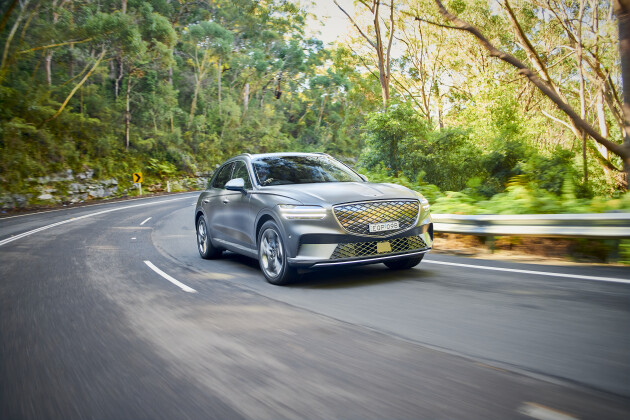 News
News2023 Genesis Electrified GV70 Australian pricing and features
Genesis has revealed local details for the electric GV70 medium SUV, with one variant on offer
-
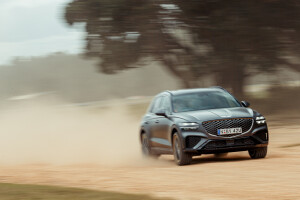 COTY
COTY2022 Wheels Car of the Year contender: Genesis GV70
Korea’s premium brand continues to show promise, if not perfection
-
 COTY
COTYThe quietest cabins at Wheels Car of the Year 2022
Our judges like to hear themselves think, so a quiet contender is a plus
-
 COTY
COTYWheels Car of the Year 2022: The Contenders
Who made the cut in our hunt for the best new car on sale?
-

2022 Genesis Electrified GV70 revealed, Australian launch confirmed
-
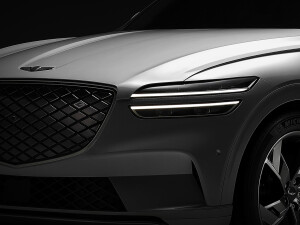
2022 Genesis GV70 EV to be revealed this week
-
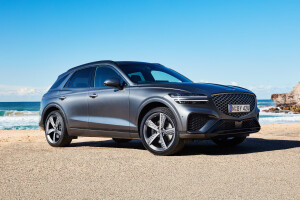
2021 Genesis GV70 pricing and features for Australia – UPDATE
-
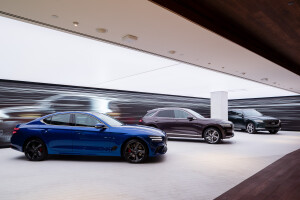
Genesis opens second Australian studio in Melbourne


